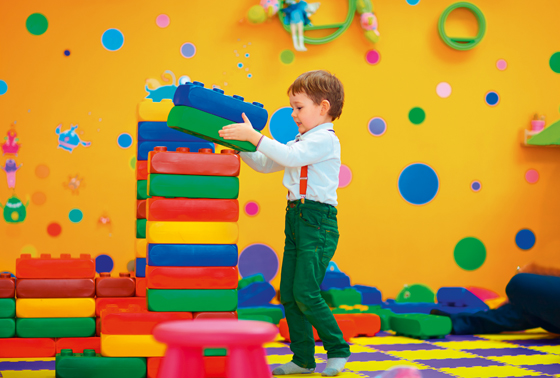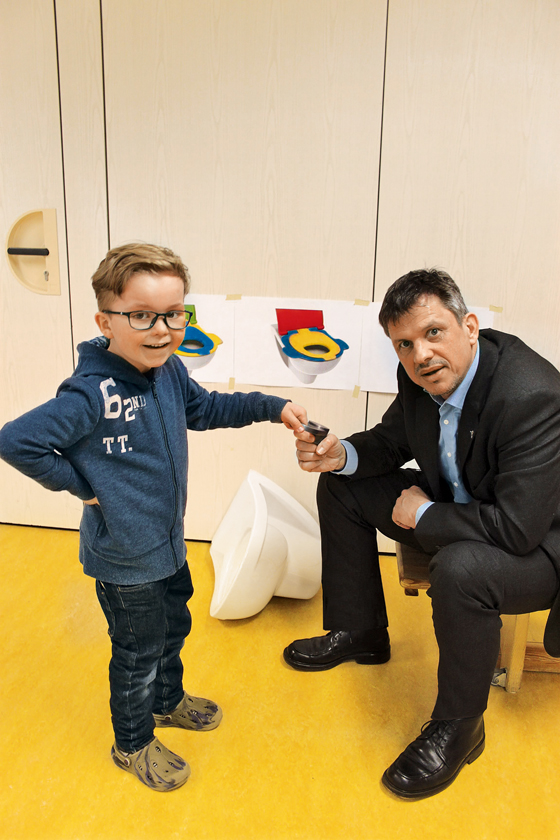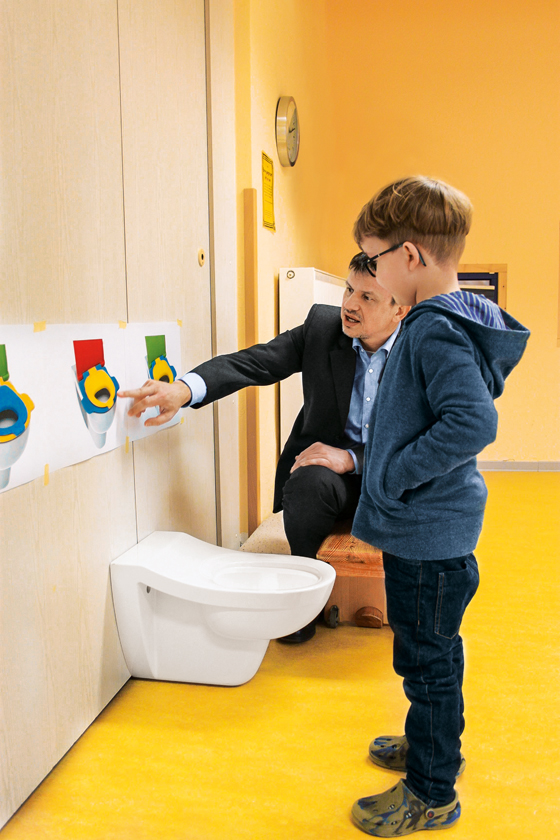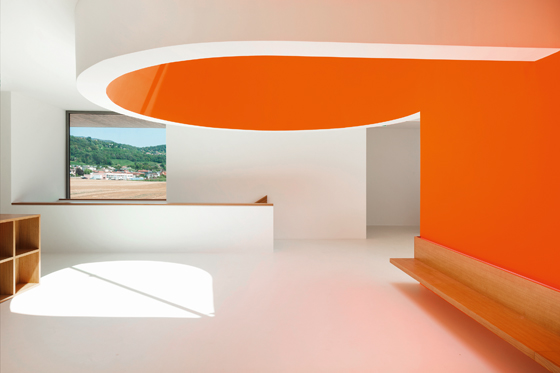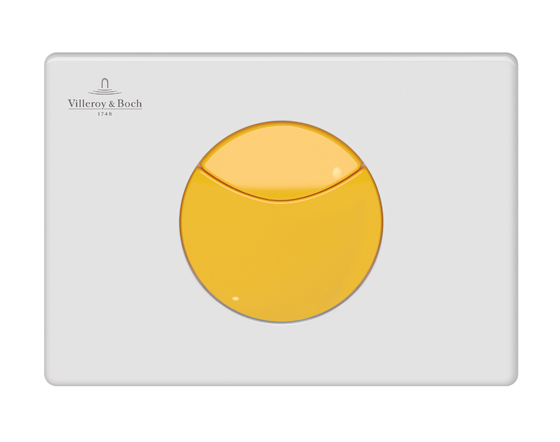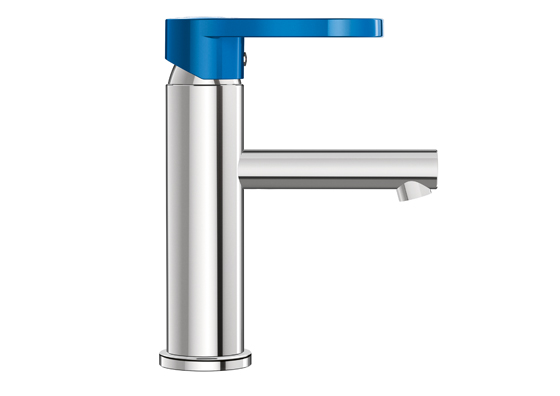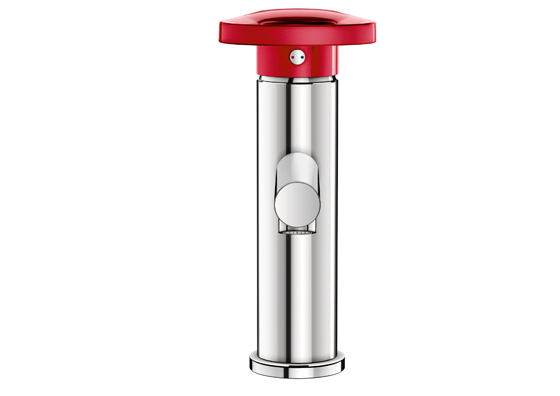Orientation and space: VILLEROY & BOCH
Texte par Villeroy & Boch
Mettlach, Allemagne
12.06.18
Why children prefer a clear architectural style, and what levels of flexibility and openness spaces should offer.
Today, nursery school education means much more than simply looking after children and keeping them busy. It is part of the education system. This also has an impact on the architecture. Children should enjoy taking part in activities, creating and trying things out so that they can use their imagination and develop their personality. It is therefore important for architects to create inspiring learning environments which help children to become familiar with day-to-day tasks – such as using a door handle or turning on a bathroom tap. This requires a change in perspective.
Independent learning: Children love trying out new things. This is what helps them develop a sense of balance and stability within their environment
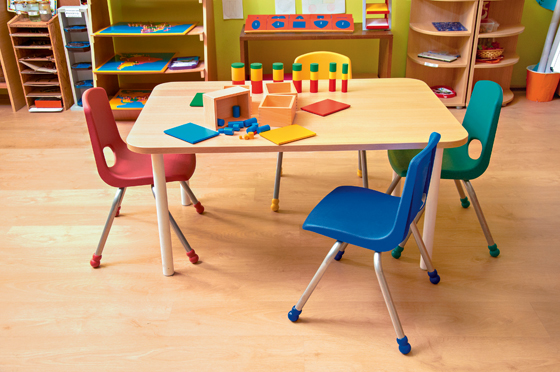
Independent learning: Children love trying out new things. This is what helps them develop a sense of balance and stability within their environment
×Learning together
O.novo Kids offers more than good ceramics and matching ergonomics. The experts from Villeroy & Boch took children's perspectives into account during intensive workshops with the young users.
With children for children
A high-quality bathroom collection for children that combines fun with functionality. That was the brief that the product developers at Villeroy & Boch were given. In consultation with all parties, a collection was to be created, the intuitive and child- friendly design of which would encourage children's natural development. Naturally, the highest hygiene standards for safe use were also set.
Ideas need to be tried out
For Villeroy & Boch, good design and top quality were not enough to launch the collection. First, extensive tests needed to be carried out to check that the ceramics and accessories could be used safely. During intensive workshops, children and educators then checked out the everyday suitability of the collection. Extensive tests proved that, without receiving any instructions, the children intuitively chose the appropriate height on the three-tier washbasin when washing their hands. An encouraging confirmation that children can experience a real sense of achievement when interacting independently with O.novo Kids.
Crowdstorming for kids
In addition to the ergonomic and educational aspects, this project also focuses, above all, on creating a fun environment, and therefore on encouraging acceptance by the children. To ensure this, Villeroy & Boch used a crowdstorming activity to activate the creative community. Out of 51 drafts, three designs provided the basis for the new children's bathroom collection. Based on intense discussions with educators, designers and, above all, with children themselves, Villeroy & Boch developed the O.novo Kids collection and introduced it to the market.
The “colourfulness” of children
When choosing colours for a nursery school, most educators recommend a concrete allocation of colours, such as the use of subdued colours in recreational areas. In this way, colours are not overloaded and the children's own “colourfulness” is encouraged to develop freely. However, entrance areas and halls are allowed to be more striking and to feature a high-contrast design. Conversely, in areas designed for relaxation and sleeping, strong contrasts would contradict their function. Primary colours aid orientation. The O.novo Kids children's range applies this approach, using the colours red, yellow and blue.
Intuitive orientation
In education, colours are a recognised tool for promoting learning achievements through intuitive guidance. For example, this mechanism is used on coloured control elements to indicate their operation. Just as with flush plates on toilets or different coloured toilet seats, they intuitively draw children's attention to the fact that something needs to be activated. A child-friendly lever on taps also facilitates operation, and an integrated scald protection feature gives them a sense of safety. Blue, red and yellow single-lever mixer taps can be colourfully combined, encouraging children to wash their hands on their own. Successfully addressing the “challenge” helps to improve the child's self-confidence and increases the educational value.

